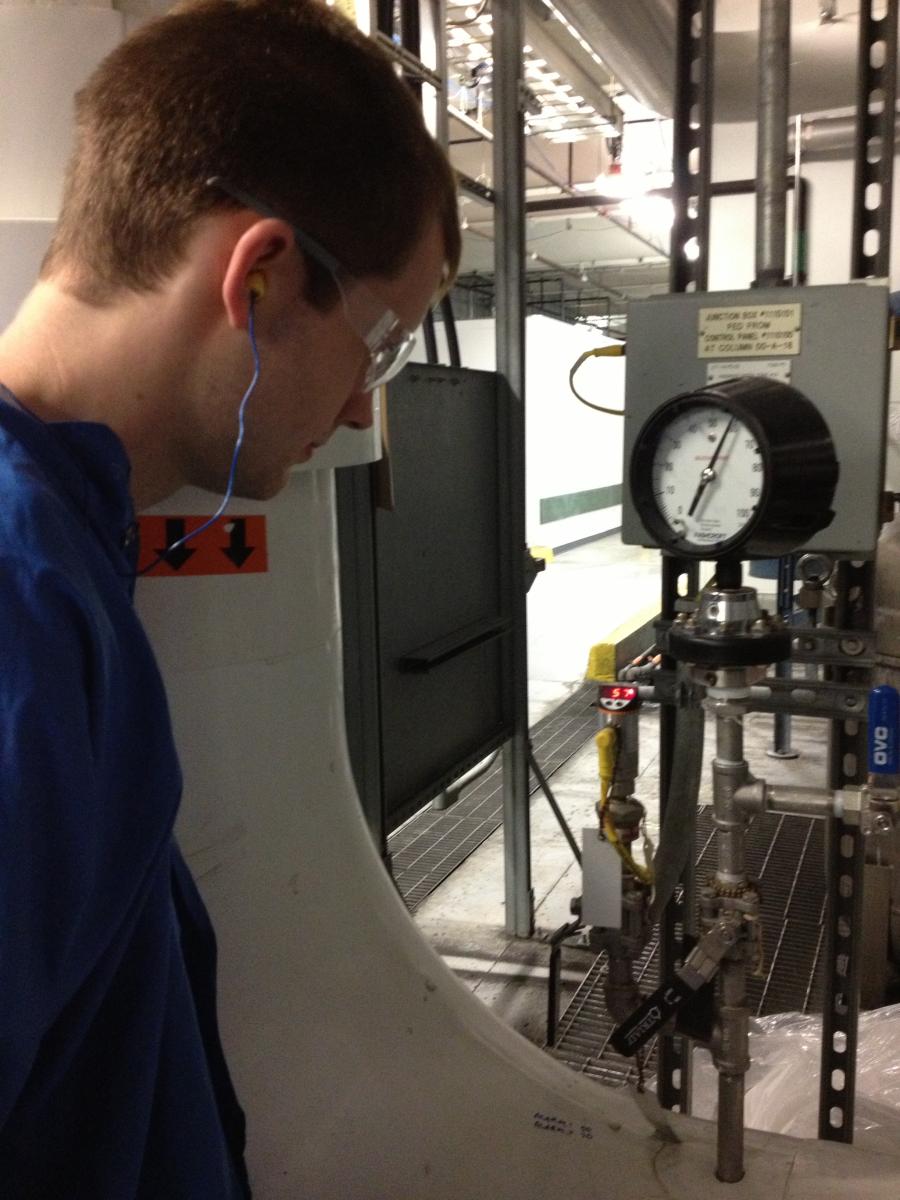EDF Climate Corps fellow | September 11, 2013
 By: Jon Beck
By: Jon Beck
Host Organization: General Motors
School: Columbia University
A few weeks into my EDF Climate Corps fellowship at General Motors, an engineer joked that the “paint geeks” (me and my colleagues) grow egos that reduce cars and trucks to expensive easels for shiny paint. She was partially right. I began to take note of paint quality on every vehicle I passed on the street. The paint often looked great, and I learned that paint defends against corrosion in salty winter conditions, UV radiation from constant sun exposure and damage caused by minor scratches and chips. Paint is a beautiful and functional product.
We also think a lot about the painting process because it consumes about 70 percent of the energy spent to produce each vehicle, making painting the most energy-intensive process of vehicle final assembly. General Motors is committed to reducing energy and carbon intensity 20 percent per vehicle by 2020; in the Energy and Carbon Optimization (ECO) group at GM, we develop plans to accomplish that goal.
The ECO group studies vehicle manufacturing to reduce energy consumption, which results in saved utility cost and reduced greenhouse gas emissions. Energy spending - $1 billion a year - isn’t GM’s largest business expense, but there is little reason to ignore it. Most paint shops have a lifetime of about 40 years, so any improvements we install can deliver savings for decades.
Painting hundreds of vehicles every day with minimal defects on complex body types is a difficult industrial process. Reducing energy and emissions requires the participation of stakeholders across many levels of the company. Negotiating to incorporate new energy-efficient equipment and practices into the painting process can be a challenge. When GM sets energy budgets for assembly areas, the area leaders develop an interest in meeting that goal. Separate from area leaders are the technicians and engineers ultimately responsible for practicing energy plans while building hundreds of cars each day.
 Our group approaches energy projects with the attitude that energy reduction plans can introduce new tools that make energy reduction projects easy for manufacturers. This summer we developed energy projects to reduce paint pumping horsepower and outside air ventilation. Our energy reduction plans also reduce the frequency of HVAC maintenance and add process flexibility to paint pre-cleaning systems.
Our group approaches energy projects with the attitude that energy reduction plans can introduce new tools that make energy reduction projects easy for manufacturers. This summer we developed energy projects to reduce paint pumping horsepower and outside air ventilation. Our energy reduction plans also reduce the frequency of HVAC maintenance and add process flexibility to paint pre-cleaning systems.
Since arriving at GM my perception of the company has shifted. I doubted that GM could remake itself into a relevant manufacturer of efficient vehicles that would interest young consumers. The newest generation of electric vehicles - the Chevy Volt and Spark EV - are pushing vehicle electrification technology to the real world and very fun to drive. I’m pleased to know that GM can also build compact, 40 MPG internal combustion vehicles. When I joined for the summer, I was impressed to find manufacturing engineers who dedicate 100 percent of their days to energy efficiency projects and supply chain operations that enable landfill-free manufacturing. I am excited to see what other sustainability practices the American car industry will pioneer in the next few years.
About EDF Climate Corps
EDF Climate Corps (edfclimatecorps.org) taps the talents of tomorrow’s leaders to save energy, money and the environment by placing specially-trained EDF fellows in companies, cities and universities as dedicated energy problem solvers. Working with hundreds of leading organizations, EDF Climate Corps has found an average of $1 million in energy savings for each participant. For more information, visit edfclimatecorps.org. Read our blog at edfclimatecorps.org/blog. Follow us on Twitter at twitter.com/edfbiz and on Facebook at facebook.com/EDFClimateCorps.